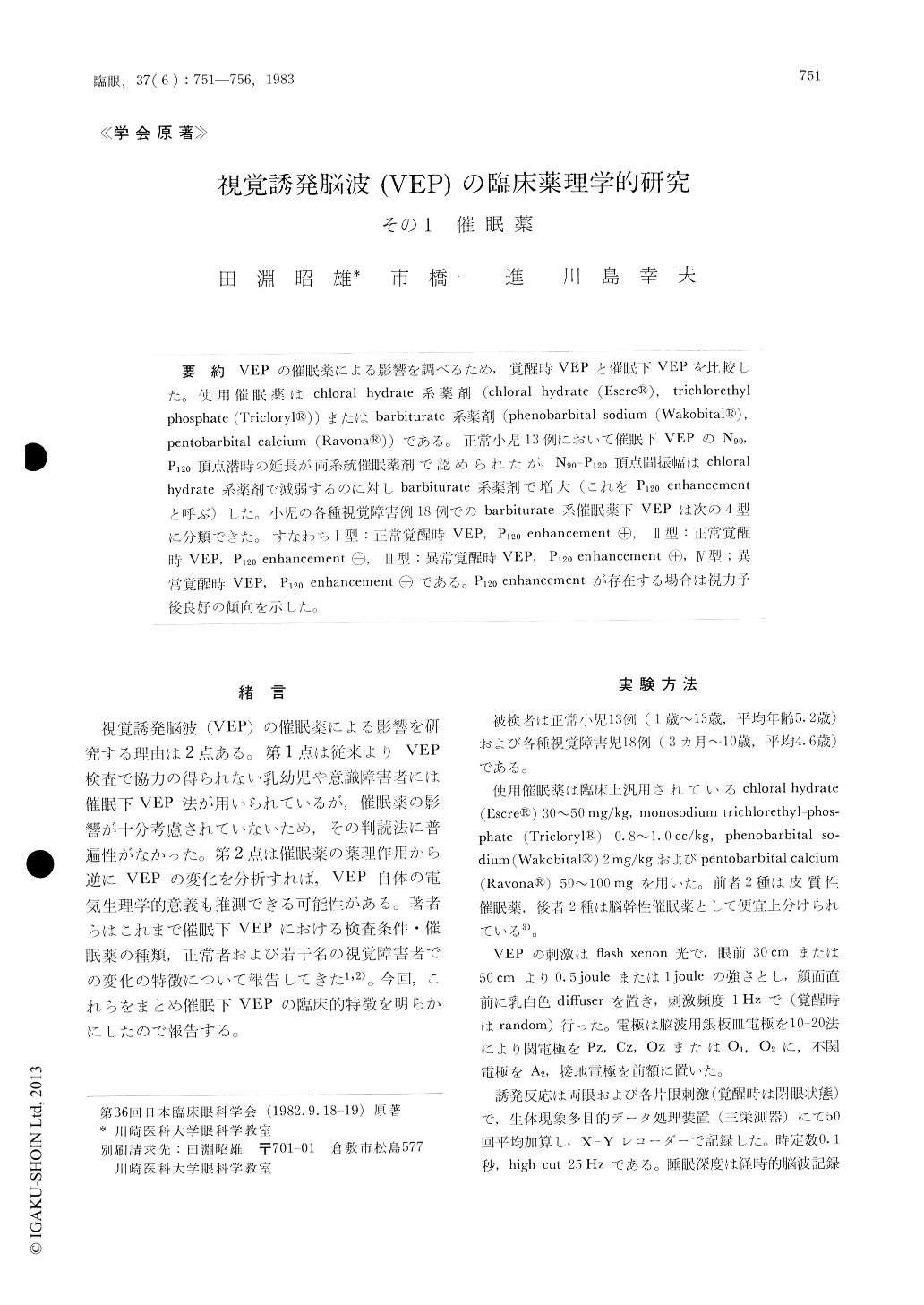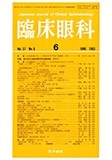Japanese
English
- 有料閲覧
- Abstract 文献概要
- 1ページ目 Look Inside
VEPの催眠薬による影響を調べるため,覚醒時VEPと催眠下VEPを比較した。使用催眠薬はchloral hydrate系薬剤(chloral hydrate (Escre®),trichlorethylphosphate (Tricloryl®))またはbarbiturate系薬剤(phenobarbital sodium (Wakobital®)),pentebarbital calcium (Ravona®))である。正常小児13例において催眠下VEPのN90,P120頂点潜時の延長が両系統催眠薬剤で認められたが,N90—P120頂点間振幅はchloralhydrate系薬剤で減弱するのに対しbarbiturate系薬剤で増大(これをP120 enhancementと呼ぶ)した。小児の各種視覚障害例18例でのbarbiturate系催眠薬下VEPは次の4型に分類できた,,すなわらI型:正常覚醒時VEP,P120 enhancement⊕,II型:正常覚醒時VEP,P120enhancement⊖,III型:異常覚醒時VEP,P120enhancement⊕,IV型;異常覚醒時VEP,P120enhancement⊖である。P120enhancementが存在する場合は視力予後良好の傾向を示した。
We evaluated the effect of hypnotics on the visual evoked potential (VEP) by comparing the VEP in the awake and hypnotized states. We used chloral hydrates (chloral hydrate or trichlorocthyl phos-phate) or barbiturates (phenobarbital sodium or pentobarbital calcium) in the present study.
Chloral hydrates or barbiturates induced a pro-longation of the peak latency of N90 and P120 as a common hypnotic effect on the VEP in 13 normal children. Chloral hydrate induced a decrease in the amplitude of N90-P120 in the VEP.

Copyright © 1983, Igaku-Shoin Ltd. All rights reserved.


